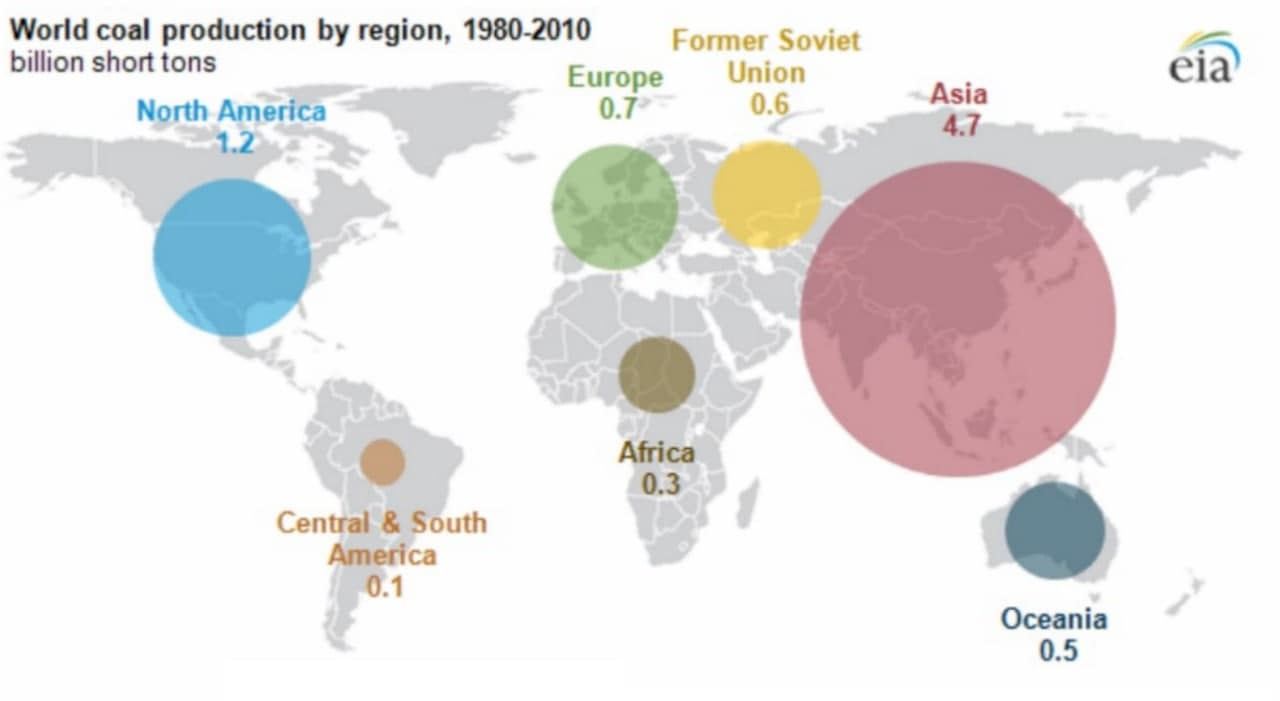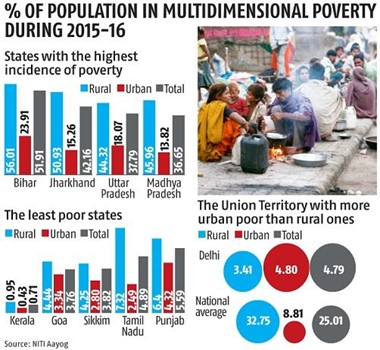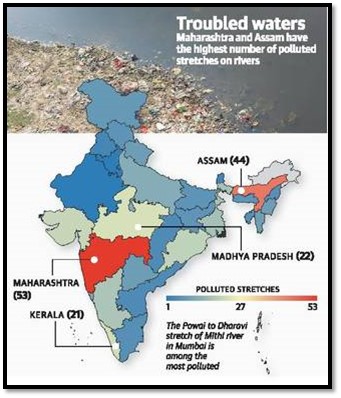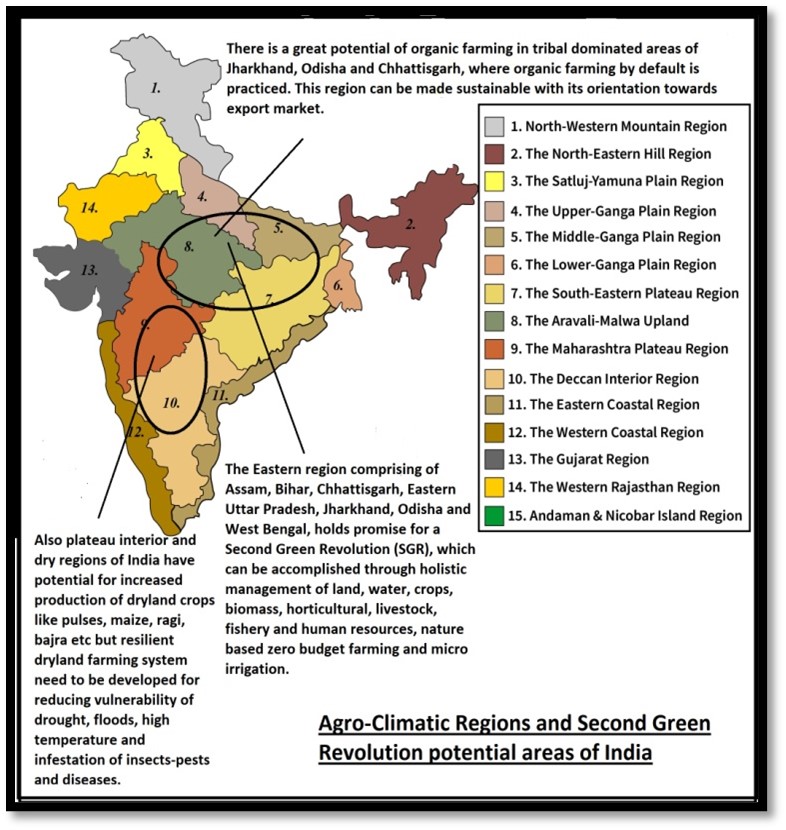22 Jan
State of Forests in India
Forest Cover and Recorded Forest Area
Both Forest Cover and Recorded Forest Area (RFA) describe the extent of forest but have different meanings.
- The 'Forest Cover' refers to all tree patches that have canopy density of more than 10% and area of one hectare or more in size, irrespective of land use, legal status and ownership. It may include orchards, bamboo, and palms etc. and is assessed through remote sensing.
- The 'Recorded Forest Area' (RFA) or 'Forest Area' refers to all the geographical areas recorded as 'Forests' in government records irrespective of the actual trees growing on such lands. RFA mainly comprises of Reserved Forests (RF) and Protected Forests (PF) and Unclassed Forests notified under Indian Forest Act, 1927 or respective State Forest Acts.
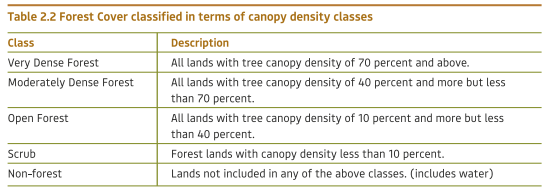

State of Forests in India- Key Findings of ISFR 2021
The ISFR-2021 provides information on forest cover, tree cover, mangrove cover, growing stock, carbon stock in India’s forests, forest fire monitoring, and forest cover in tiger reserve areas, above ground estimates of biomass using SAR data & climate change hotspots in Indian forests.
Forest Cover in the Country
21.71% of the geographical area of the country is under the forest cover. The tree cover of the country is 2.91% of the geographical area. Thus, the total Forest and Tree cover of the country is 24.62% of the geographical area of the country.
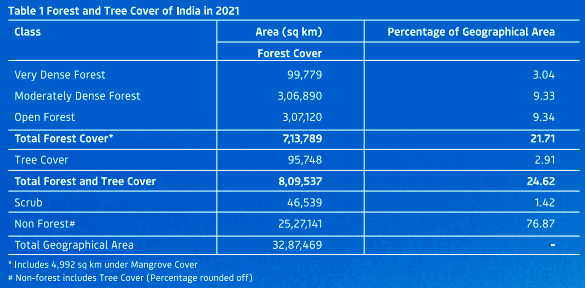
State/UT wise Forest Cover (map)
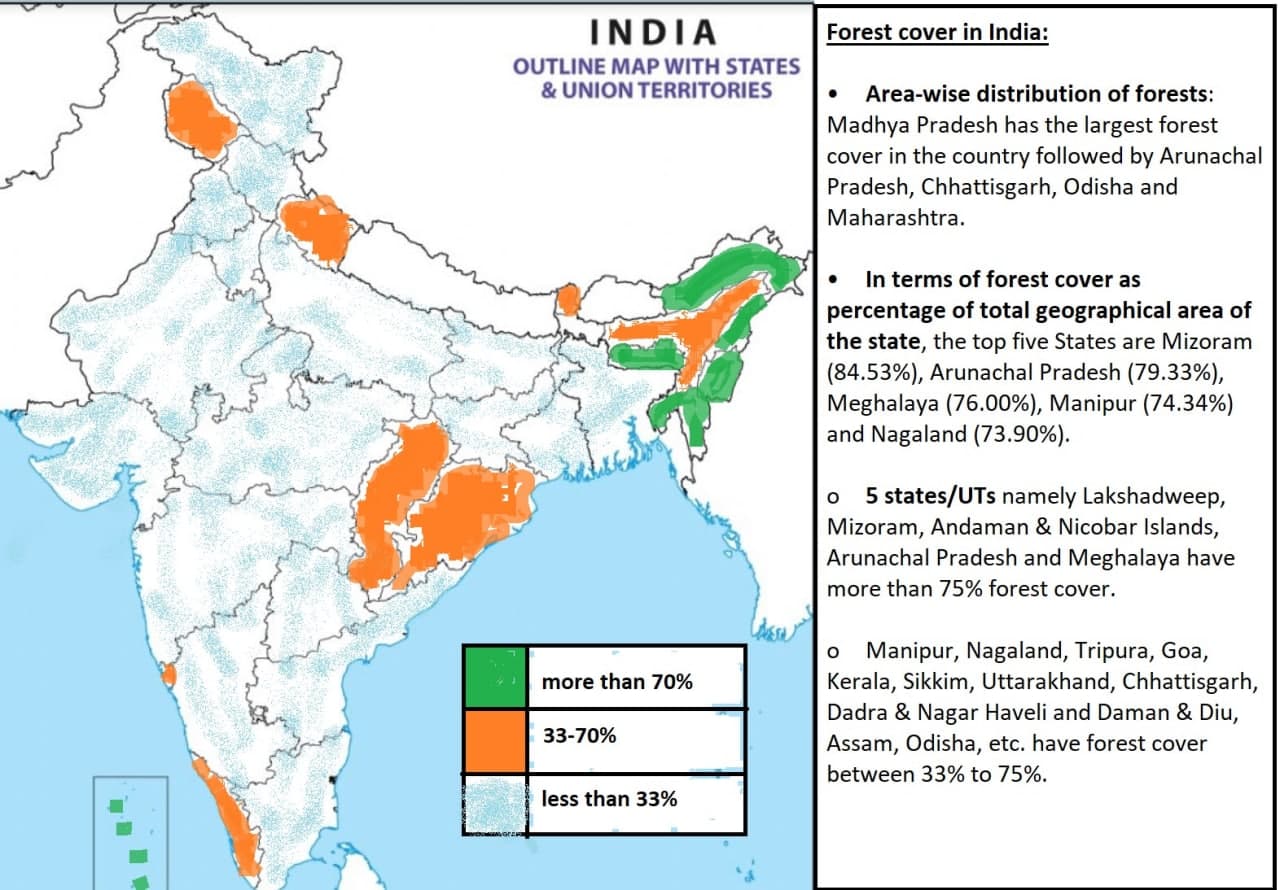
Change in Forest and Tree cover compared to 2019 Assessment:
- The current assessment shows an increase of 1,540 sq km (0.22%) of forest cover, 721 sq km (0.76%) of tree cover and 2,261 sq km (0.28%) of forest and tree cover put together.
- The Gain in Forest Cover or improvement in forest canopy density may be attributed to better conservation measures, protection, afforestation activities, tree plantation drives and agroforestry
- The loss in Forest Cover and deterioration of forest canopy may be attributed to shifting cultivation, felling of trees, natural calamities, anthropogenic pressure and developmental activities.

Forest cover in Hill Districts
- The National Forest Policy 1988 envisages the goal of maintaining two third of the area in hills under Forest Cover.
- Due to the fragility of hill areas and vulnerability to land degradation, the Forest Cover plays an important role in prevention of soil erosion, land degradation and also maintaining ecological balance and environmental stability.
- As per the definition given by the erstwhile Planning Commission of India, a hill district or taluka is one where altitude is above 500m from the mean sea level. Only the districts where the hill talukas exceed 50% of the total geographical area of the district are considered for the assessment. There are 140 hill districts.
- Forest cover in the hill districts of the country is 2,83,104 sq km, which is 40.17% of the total geographical area of these districts.
- The current assessment shows a decrease of 902 sq km (0.32%) in 140 hill districts of the country.
Forest cover in the Tribal Districts
- Tribal economy, society and culture are intricately linked with forests. Forests contribute significantly as source of sustenance and livelihood for the tribal community.
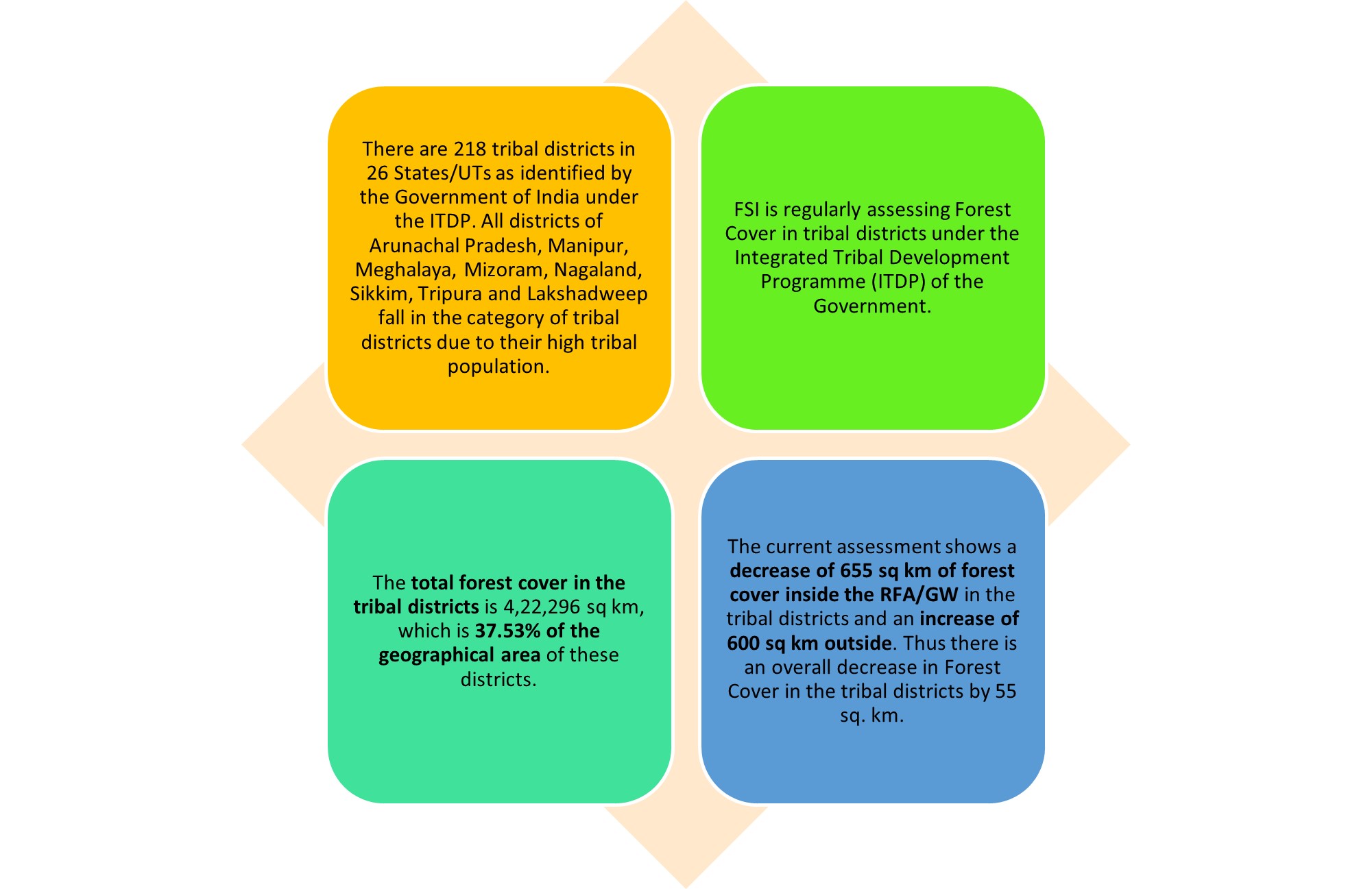
Forest Cover in the North Eastern States
- North Eastern region constitute 98 percent of the geographical area of the country but account for 23.75 percent of the total Forest Cover of the country.
- This region of the country is characterized by shifting / jhum cultivation. Such agricultural practices mainly contribute to cause fluctuation in Forest Cover in this region.
- Total forest cover in the North Eastern region is 66% of its geographical area. The current assessment shows a decrease of forest cover to the extent of 1,020 sq km (0.60%) in the region.
Mangrove
Status of Mangrove Cover in India
- Total mangrove cover in the country is 4,992 sq km (0.15% of India’s geographical area). An increase of 17 sq Km in mangrove cover has been observed as compared to the previous assessment of 2019.
- Top three states showing mangrove cover increase are Odisha (8 sq km) followed by Maharashtra (4 sq km) and Karnataka (3 sq km).
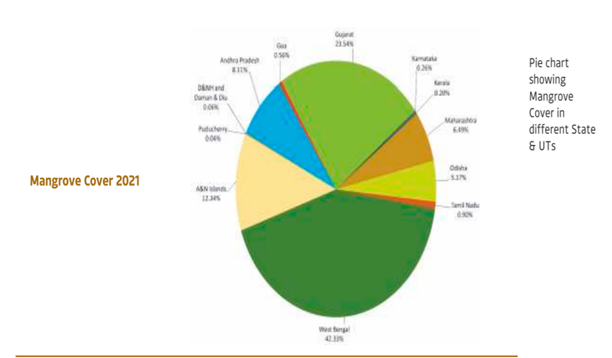
Total carbon stock in forest
- In the present assessment, total carbon stock in forest is estimated as 7,204.0 million tonnes. There is an increase of 79.4 million tonnes in the carbon stock of the country as compared to the last assessment of 2019. The annual increase is 39.7 million tonnes, which is 145.6 million tonnes CO2 eq.
- Soil Organic Carbon (SOC) represents the largest pool of carbon stock in forests, which has been estimated as 4,010.2 million tonnes. The SOC contributes 56% to the total forest carbon stock of the country.
- Soil organic carbon is the largest pool of forest carbon accounting for (55.67 %) followed by Above Ground Biomass (32.20 %), Below Ground Biomass (9.98 %), Litter (1.49 %) and dead wood (0.66%).
- Arunachal Pradesh has maximum carbon stock of 1,023.84 million tonnes followed by Madhya Pradesh (609.25 million tonnes), Chhattisgarh (496.44 million tonnes) and Maharashtra (451.61 million tonnes).
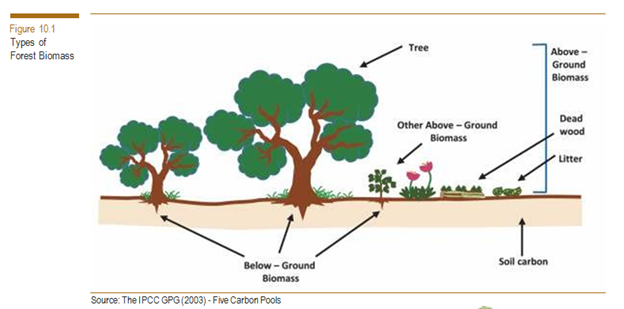
- The maximum carbon stock has been stored in Tropical Dry Deciduous Forest (2,177 million tonnes) followed by Tropical Moist Deciduous Forest (1,303 million tonnes) and Tropical Semi Evergreen Forest (686 million tonnes).
Bamboo Resources of the Country
- The total bamboo bearing area of the country has been estimated to be 15.0 million ha. Madhya Pradesh has maximum bamboo bearing area of 1.84 m ha followed by Arunachal Pradesh (1.57 million ha), Maharashtra (1.35 million ha) and Odisha (1.12 million ha).
- As compared to the estimates of ISFR 2019, the total bamboo bearing area in the country has decreased by 1.06 million ha. Madhya Pradesh has shown highest decrease in the bamboo bearing area followed by Maharashtra.
- Bamboo bearing area in Mizoram has shown highest increase of 1,085 sq km followed by Arunachal Pradesh (758 sq km).
Assessments of forest cover in the Tiger Reserves, Corridors and Lion conservation area
- Nagarjunasagar Srisailam Tiger Reserve in Andhra Pradesh has the largest forest cover (2,932.95 sq km) followed by Simlipal in Odisha (2,562.86 sq km) and lndravati in Chhattisgarh (2,377.28 sq km).
- In terms of forest cover as percentage of the area of Tiger reserves, the top five Tiger reserves are Pakke in Arunachal Pradesh (96.83%), Achanakmar in Madhya Pradesh (95.63%), Simlipal in Odisha (94.17%), Kali in Karnataka (92.45%) and Dampa in Mizoram (92.05%).
- Between 2011 and 2021, the forest cover has decreased by 22.62 sq km (0.04%). 20 Tiger reserves have recorded an overall gain in forest cover during the past decade whereas 32 Tiger reserves have recorded an overall loss of forest cover.
- The 5,821 wetlands cover 7.20% of the total area of the Tiger reserves. The Sundarban Tiger reserve has the largest area under wetlands accounting for 96.76% of its total area. These wetlands are mostly coastal and inland in nature. Kanha Tiger reserve has the highest number of wetlands, 461 wetlands.
- Assessment in Gir NP and WLS: The total forests cover account for 85.20% of the total area of the Gir NP and WLS.
Forest Fires

Climate Hotspot projections
Affected Forest Type Groups
- Himalayan ecosystems and forest types especially Himalayan dry temperate forests, Himalayan moist temperate forests, Sub-Alpine forests, Moist Alpine scrub and Dry Alpine scrub are most exposed to climate change effects.
- Tropical thorn forests, Tropical dry evergreen forests, Montane wet temperate forests, Littoral and Swamp forests and Subtropical broad leaved hill forests have relatively lesser exposure to temperature projections.
- 'Tropical Dry Deciduous Forests', 'Tropical Moist Deciduous Forests' and 'Tropical Semi-evergreen Forests', which are most dominant in the central India covering major part of the States of Madhya Pradesh, Chhattisgarh, Northern part of Odisha and western part of Jharkhand will be impacted by adverse climate change from 2050 onwards.
- Climate change will affect forests in multiple ways, both directly and indirectly.
Other Findings
Forest Cover in Major Mega cities

India's Forests vis-à-vis Forest Resources in the World
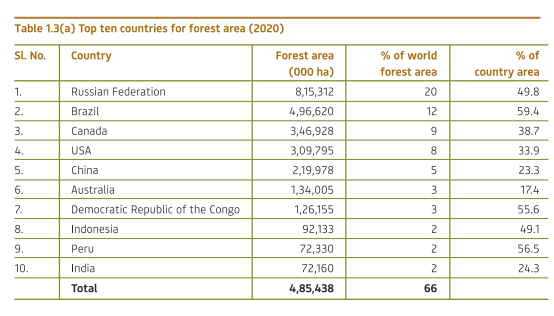
Key Schemes and Government Programmes for Forest Conservation
- The conservation and development of forest primarily involves three strategies – afforestation through natural/artificial regeneration, protection and management. The MoEFCC is implementing three major schemes for development of forest areas -
- National Afforestation Programme (NAP) scheme being implemented for afforestation of degraded forest lands,
- National Mission for a Green India (GIM) aims at improving the quality of forest and increase in forest cover besides cross sectoral activities on landscape basis.
- The Forest Fire Prevention & Management Scheme (FFPM) takes care of forest fire prevention and management measures.
- The funds collected under Compensatory Afforestation Fund Management and Planning Authority (CAMPA), as compensatory levies from states is also used in plantation activity including compensatory afforestation by States/UTs.
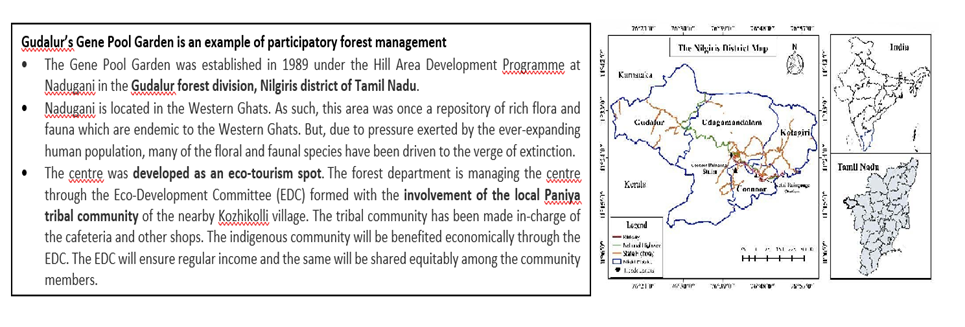
- National Forest Policy, 1988
- India’s forests are currently governed by the National Forest Policy of 1988. The principal aim of National Forest Policy, 1988 is to ensure environmental stability and maintenance of ecological balance including atmospheric equilibrium which is vital for sustenance of all life forms, human, animal and plant. The derivation of direct economic benefit must be subordinate to this principal aim.
- The major achievements of National Forest Policy, 1988 are as follows:
- Increase in the forest and tree cover
- Involvement of local communities in the protection, conservation and management of forests through Joint Forest Management Programme
- Conservation of Biological Diversity and Genetic Resources of the country through ex-situ and in-situ conservation measures
- Significant contribution in maintenance of environment and ecological stability in the country
- The Nagar Van Scheme for creation of 200 Nagar Van, on forest land. The primary objective is to create forested area in cities with Municipal Corporation, which will act as lungs of the cities.
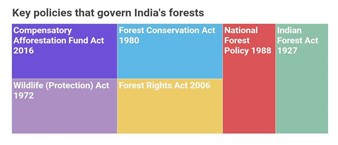
Despite increase in total forest and tree cover, the loss of India’s dense and moderately dense forest is a matter of concern, because the recent amendments to the Forest Act, 1980 are likely to further make the diversion of forest land for non-forest use easier.
The northeastern states have been consistently losing forest cover. Between 2011 and 2019, forest cover of six states, excluding Assam, had decreased by nearly 18% and the region lost nearly 25,012 sq km of forest cover in the preceding decade.This decline caused by natural calamities, shifting agriculture and deforestation will affect the region’s water resources and will have an increased effect on landslides.
Hence,in order to reap the benefits of forest resources, there needs to be integration of sustainable development, natural farming practices, ecotourism practices etc. and due respect to traditional knowledge such as conserving sacred groves.
Where it can be used: Geography Optional• P1: Climatology(Climate change) , Biogeography (Degradation), Environmental Geography (Ecosystem management and Hazards), Economic Geography (Agriculture, LTG), Population Geography (Migration), Regional Planning (Environmental issues, Regional developmental).• P2: Physical setting (Droughts), Resources (Land, Forest), Agriculture (Agro-climatic planning and regionalisation), Cultural settings (Migration), Regional Development and planning (Desert, Drought prone area planning), Contemporary (Desertification and soil erosion).
• GS: GS3( Environmental degradation and conservation).
Source:
- Forest Survey report 2021 released
- ISFR 2021- Executive Summary
- Explained: Takeaways from Forest Report
- India’s New ‘State of Forest’ Report Is Not Really About Forests
- Investing in degraded forest land for the health of our economic system
- Gudalur’s Gene Pool Garden is an example of participatory forest management
- Aim and objectives under Forest Policy, 1988
- Forest, tree cover in India up by 2,261 sq km in two years: Key takeaways from the forest report
- National Afforestation Programme
Steel industry in India- Challenges and Prospects
Why in news: Indian Steel Association (ISA) has submitted its memorandum to the government, seeking removal of 'lesser duty rule' and lower duties on input raw materials.
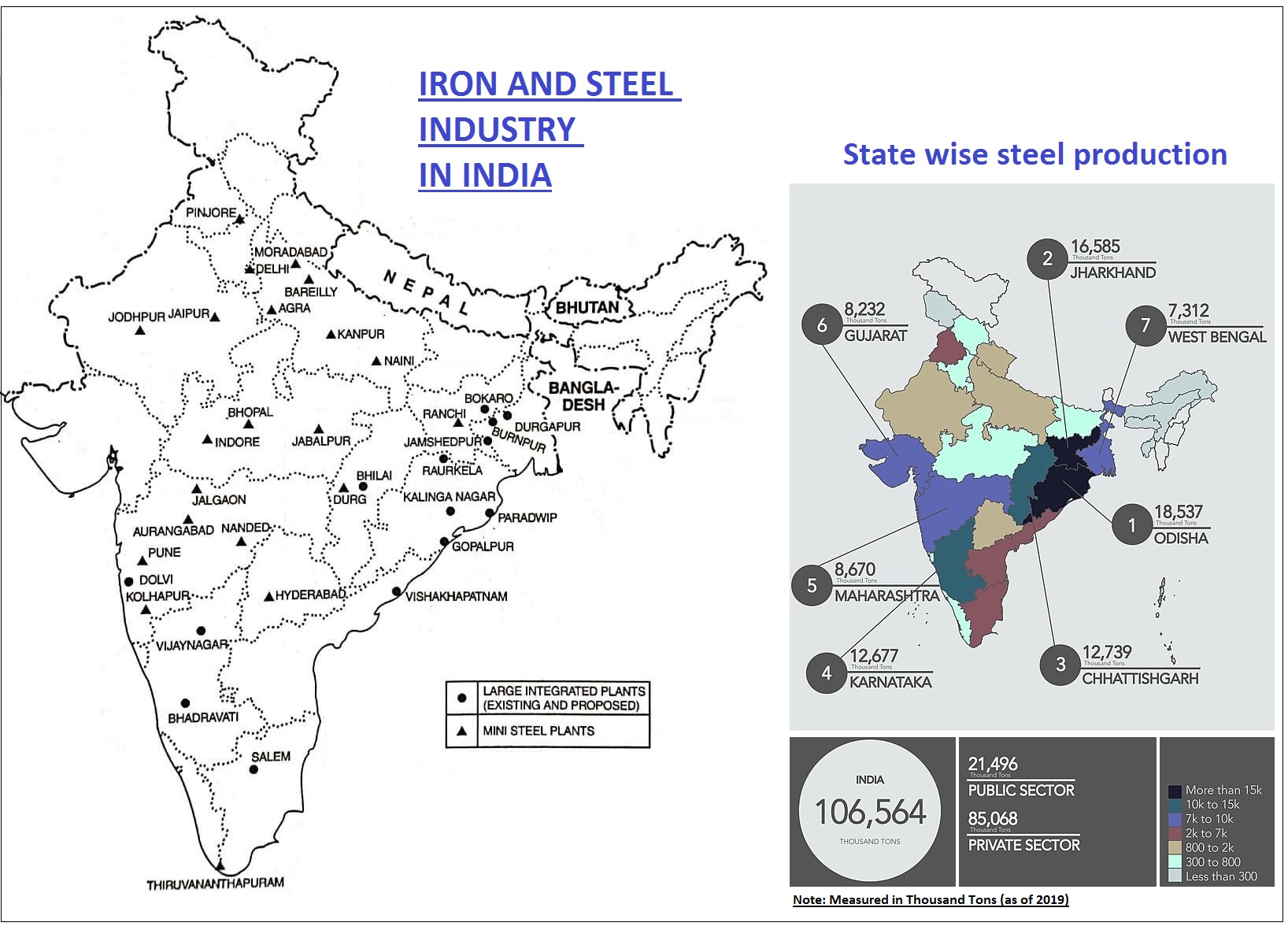
Several challenges faced by the steel industry in India:
- Shortage of metallurgical coal: Although India has huge deposits of high grade iron ore, her coal reserves, especially high grade coking coal for smelting iron are limited. Many steel plants are forces to import metallurgical coal. For example, steel plant at Vishakhapatnam has to import coal from Australia. Also due to various factors like variegated weather and the pandemic, there have been huge fluctuations in coking coal supply as well as coking coal import prices. This in turn has severely affected the steel prices in India for both crude and finished.
- Shortfall of capital: Developing countries like India have a higher difficulty amassing huge capital investments for large-scale industries like steel. Even the major public sector integrated steel plants are aided by foreign investments. Thus, the production cost increases and so do other expenses. It all leads to higher domestic steel prices which in turn leads to a decrease in domestic demand.
- Power problems: Cost of electricity in India is among the highest in the world and on top of that the supply and quality remain uncertain. This has slowed down the progress of steel making in the country. While the problems relating to the availability and pricing of electricity are well known, the steel industry will have to take steps to reduce energy consumption and adopt those technologies that are less dependent on electrical energy till the ongoing reforms in that sector bring out results.
- Lack of technological advancement: Steel Industry in the 21st century heavily depends on technology. The technologically advanced machinery, tools, and equipment give a significant boost to steel production and steel procurement. However, many companies find it difficult to access and install these machinery, tools, and equipment due to various factors like capital, land, expertise, manpower, and more. Thus, utilizing cost-intensive methods that spike the domestic steel prices in India.
- Low Productivity: The per capita labour productivity in India is at 90-100 tonnes which is one of the lowest in the world. To put it into perspective, a mini mill in the U.S. employs less than 300 employees to produce 1.2 million tonnes of hot rolled coils. A comparable facility in India employs 5,000 workers. Therefore, there is an urgent need to increase the productivity which requires retraining and redevelopment of the labour force.
- Poor logistics: whether it is physical transportation of raw materials for steelmaking or physical transportation of finished steel to demand centres, transportation of bulk materials is always challenging, arduous and costly for Indian steel makers due to poor logistics. It has resulted in high costs at every stage. Moreover, most Indian steel plants are located inland, unlike in China, Japan or Korea, where they are located close to the sea. This increases the challenge of managing logistics requirements for most steel plants in India.
- GHG emissions: The steel industry contributes to roughly 9 per cent of the country’s total GHG emissions, which is set to increase manifold as the government plans to double India’s steel manufacturing capacity to 300 million tonnes per annum (mtpa) by 2030. This contradicts with our net-zero commitments. Unless we come up with green reforms in the steel industry, this becomes a hurdle for its growth.
- Low potential utilization: The potential utilisation in iron and steel is very low. Rarely the potential utilisation exceeds 80%. This is caused by several factors, like strikes, lockouts, scarcity of raw materials, energy crisis, inefficient administration, etc.
Prospects of steel industry in India:
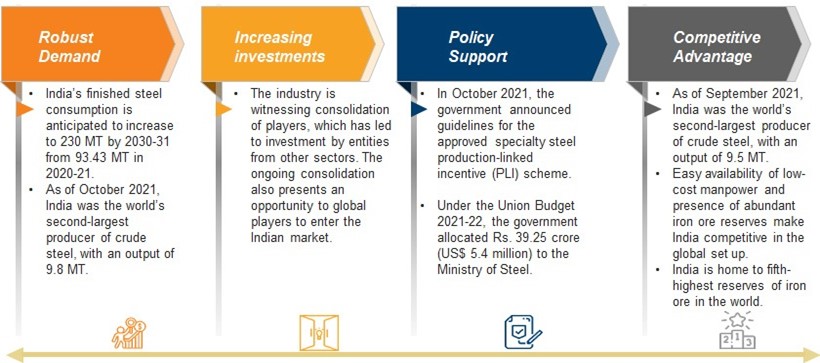
Way forward:
- Green steel: It refers to a steelmaking process that lowers greenhouse gas emissions, cuts costs and improves the quality of steel. This can be done through usage of gas in place of coal, recycling steel etc. To move towards ‘Green Steel’, the Petroleum and Natural Gas Ministry has launched Pradhan Mantri Urja Ganga project in the Eastern India, which can provide gas to all the Steel plants, located in the area.
- Digital disruption: By leveraging the emerging technologies of fourth industrial revolution, overall efficiency of steel plants can drastically be improved, which will help in reducing costs and increasing profitability across the industry. However, the introduction of new technologies will entail the development of a new talent pool with the requisite skills and the up skilling of the existing workforce.
Where it can be used?
It can be used in topics related to Paper 1 (Energy Crisis, World Industries), Paper 2 (Energy Crisis, Iron and Steel industry, Environmental degradation, new industrial policies) and GS 3 (Energy, Industrial policy).
Sources:
The need for energy diversification in India
Why in news: Enunciating his energy roadmap, PM Modi said the share of natural gas in India's energy basket will be more than doubled, and the nation will be connected with one gas pipeline grid to help bring affordable fuel to people and industry.
Why there is a need for energy diversification in India?
- Energy security: India is largely dependent on fossil fuel imports to meet its energy demands – by 2030, India's dependence on energy imports is expected to exceed 53% of the country's total energy consumption. These imports are subjected to erratic price fluctuations, which in turn affects our energy supply and economy. Thus, diversifying our energy basket offers security of energy supply and reduces dependence on imported sources.
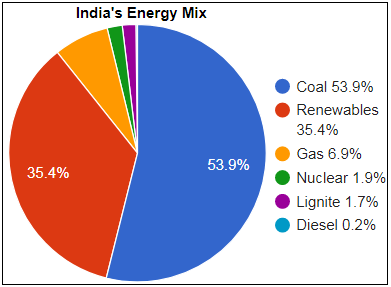
- Environmental sustainability: India’s energy profile continues to be heavily dominated by fossil fuel–based sources: by 2040, 42% of the new demand will be met by coal, and the country is projected to be among the largest oil consumers. This fossil-based power generation is responsible for half of India's CO2 emissions. Hence, diversifying our energy profile with clean energy sources like renewables, nuclear etc. becomes a pre-requisite for environmental sustainability, particularly in this era of climate change.
- Growing price competitiveness: Energy alternatives such as gas, fossil fuels etc. collectively pose a risk for power plant operators, along with end users, with their price volatility. But the renewable energy sector has witnessed tremendous advancement in the whole value chain, especially the technology leap enabled by innovation. This, coupled with the government’s backup for the startup segment, more and more new projects could be planted across the geography to reach a point where India’s need for energy can be satiated using renewable energy sources.
- India is better placed for energy diversification: With various factors giving the renewable energy segment a push, India now has a great opportunity ahead to shape its energy mix. Contributing factors like supportive government policies, coupled with incentives and infrastructure and investment promotions are being taken, to serve the social and economic growth of the country through renewable energies. Consequently, renewable energy sector is also becoming more attractive to power utilities constructing new long-term capacity projects.
- Sustainable development: Overdependence on fossil fuels for our energy needs hampers our development due to depletion of non-renewable resources, deterioration of the environment, which is in line with the Limits to Growth model. Opting for renewables in our energy mix paves way for sustainable development due to their low environmental impact, wider availability and naturally replenishable nature. SDG 7 calls for ensuring access to affordable and clean energy for all, which again highlights for the need to diversify our energy mix.
Energy diversification in India- Prospects:
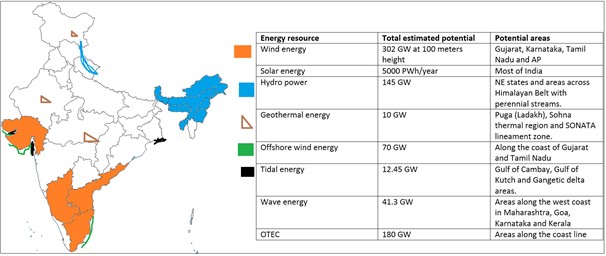
- Solar energy: India has the 5th largest installed capacity of solar power in the world. As of 2021, India has an installed solar capacity of 40 GW which is very low when compared with the target of 100 GW by 2022. India has been very active on the solar front through initiatives such as International Solar Alliance (ISA), National Solar Mission, Mega solar parks, PM-KUSUM, Atal Jyothi Yojana (AJAY) and Suryamitra program etc.
- Wind energy: Globally, India is at 4th position in terms of installed wind power capacity after China, USA and Germany. As of 2020, the total wind installed wind power capacity was 38 GW. Government set an ambitious target of 175 GW power capacity from clean renewable energy resources by 2022. Out of this, 60 GW target is set for wind power. In this regard, Government of India has taken initiatives such as National wind-solar hybrid policy, National offshore wind energy policy, Wind bidding scheme
- Geo-thermal energy: GSI has identified and mapped over 350 geothermal regions across the length and breadth of the country, from which around 10 GW of geothermal energy can be harnessed. Due to its clean and reliable nature, it can play a crucial role in achieving energy diversification and energy security.
- Hydro power: India is blessed with immense amount of hydro-electric potential and ranks 5th in terms of exploitable hydro-potential on global scenario. India is currently generating 45GW from hydropower, which is only 31% of the total potential. GoI launched a new policy on hydro power development to undertake measures for the exploitation of vast hydro power potential in the country especially in north and NE regions.
- Nuclear energy: Despite having Uranium and vast untapped thorium reserves, Nuclear power contributes only a little over 2% of our total power generation. In 2019, Department of Atomic Energy announced for 21 new nuclear plants with a total generating capacity of 15.7 GW by 2031.
- Hydrogen based energy: Government of India has launched National Hydrogen Mission in 2021 to create a share of hydrogen based energy of 6% in our total energy mix by 2050. In, October 2020, Delhi became the first Indian city to operate buses running on H-CNG in a six month pilot project.
- Ocean energy: With India having a huge 7,500 KMs of coast line, ocean energy (Tidal, Wave & OTEC) can be a game changer in achieving our objectives of energy diversification and energy security & our INDCs under Paris agreement. In 2019, the Ministry of New and Renewable Energy has declared Ocean Energy as renewable energy which makes them eligible for meeting the non-solar Renewable Purchase Obligations (RPO), in a bid to promote the development of ocean energy in India.
- Biomass based energy: India has high potential of biomass about 500 metric tons per year availability. As per MNRE around 17,500 MW power can be generated by this available biomass and additional power about 5000 MW can be produce by surplus available biomass which is around 120–150 MT.
Energy security is a key driver of economic growth. Also, SDG 7 i.e. affordable and clean energy is linked to all other SDGs in several ways. With the growing concerns of global warming by fossil fuels, adopting to renewables not only help in diversification of our energy basket and achieving energy security, but also paves way for sustainable development.
Where it can be used?
It can be used in topics related to Paper 1 (Energy Crisis, Sustainable Development, and Climate Change), Paper 2 (Energy Crisis, Environmental Degradation, Sustainable growth) and GS 3 (Environmental Degradation, Energy).
Sources:
Drumlin
The swarms of rounded hummock resulting from the deposition of glacial till are called drumlins. They look like an inverted boat or spoon. They are elliptical or ovoid hills, blunt on the upglacier end (Steeper slope), with an elongated downglacier tail.
- Size and topography : These are streamlined hills which vary in size ranging from a few metres to 100 metres in height and from few metres to 100 kms in length. Usually they occur in cluster and regular pattern. Such topography is called “Basket of egg topography”.
- Place they are found in: Colonies of drumlins are found in Finland, Northern Ireland, and Wisconcin state of USA.
- Drainage Characteristics: Drainage pattern become irregular and indeterminant in the areas dominated by drumlin clusters.
- Drumlins vs Roche Moutonnees: Drumlins resembles roches moutonnees in shape as both have one side with steep blunt slope and other side with gentle slope with long tail. But they differ in origin as former are result of glacial till (boulder clay) while the latter are erosional in character. Also upglacier side of drumlin is steep while roches mountonnees downglacier side is steep.

- Various prevalent view points regarding origin of drumlin:
- Formed due to modification in the terminal moraines by the glaciers: several recessional terminal moraines parallel to each other are formed due to recession of glacier during interglacial period. These moraine ridges are latter modified by advancing glaciers during next glacial period. The advancing glacier erodes the upglacier sides of pre-existing terminal moraines and deposit the eroded material on the down glacier side. Thus upglacier side is steepened and the down glacier side is smoothened and lengthened.
- Formed due to deposition of glacial till (boulder clay) below the ice under special circumstances: when glacier is overloaded with sediments, these are not carried upto the snout and are deposited below the ice and form mounds. These mounds attract more sediments to be deposited because they obstruct the movement of ice. These till mounds grow in size and become drumlins.
- Formed due to fluvial erosion: these are formed due to deposition of huge amount of boulder clay during glacial period. These moulds are later modified by fluvial erosion during interglacial period. Water erodes the onward side of these mounds and deposit them on the leeward side. Thus, the onward side is steepened and the leeward side is smoothened and lengthened.
National Innovation on Climate Resilient Agriculture
NICRA is a flagship network project launched in 2011, it aims at strategic research on adaptation and mitigation, demonstration of technologies on farmers’ fields and creating awareness among farmers and other stakeholders to minimize the climatic change impacts on agriculture.
Features of National Innovation on Climate Resilient Agriculture (NICRA)
- Strengthening the existing network research on adaptation and mitigation (food crops, horticulture, livestock and fishery) with more infrastructure and capacity building;
- Setting up of high through put phenotyping platforms and temperature, CO2, ozone gradient facilities at identified locations/ institutions including North East region;
- Strengthening research on climate sensitive crops like cotton, maize, sugarcane, onion, etc. which are critical for India's farm GDP/exports but not covered in the XI Plan;
- Projected impacts on water availability at the river basin level and participatory action research at large number of sites on evolving coping strategies through water saving technologies;
- Evolving a national level pest and disease monitoring system to assess the changing pest/disease dynamics under changed climate (both in crops and livestock);
- Strengthening crop simulation and climate scenario down-scaling modeling capabilities at major Institutes and a dedicated unit at IARI, New Delhi;
- Piloting the operationalization of the district/block level agromet advisory services through KVKs/district line departments and contingency plans during droughts and floods; and
- Expanding the technology demonstration and dissemination to 130 vulnerable districts of the country.
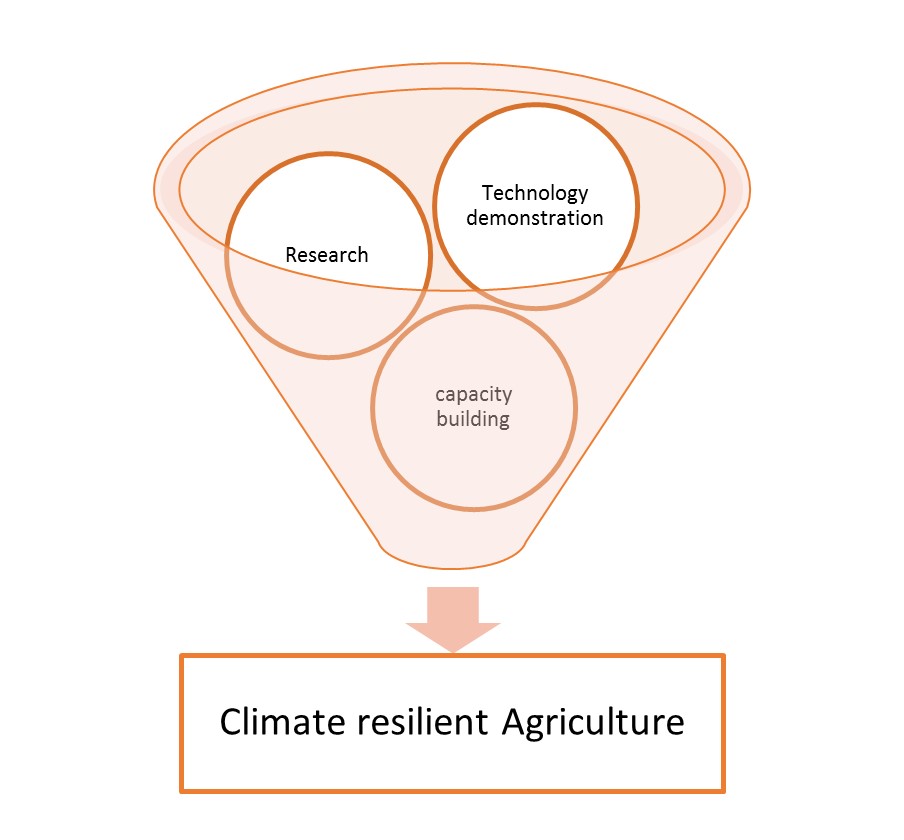
Sources:
AMRUT 2.0
AMRUT 2.0 is a step towards Aatma Nirbhar Bharat with aim of making the cities 'water secure' and providing functional water tap connections to all households.
This will be achieved through circular economy of water by effecting water source conservation, rejuvenation of water bodies and wells recycle/ reuse of treated used water, and rainwater harvesting by involving community at large.
This Mission will be run as people’s program i.e. Jan Andolan.
Mission also targets to provide 100% sewage/ septage management in 500 AMRUT cities.

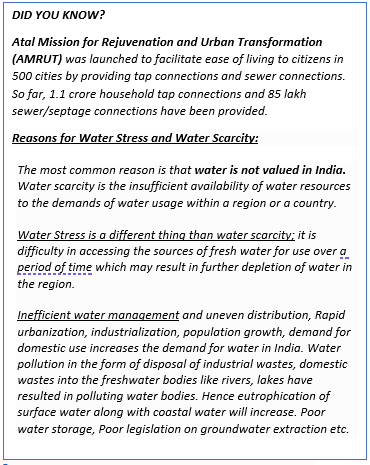
Need for and significance of the mission:
- India has 16% of the world population, but only 4% of freshwater resources.Depleting groundwater level, overexploitation and deteriorating water quality, climate change, etc. are major challenges to provide potable drinking water.
- It is an urgent requirement of water conservation in the country because of the decreasing amount of groundwater level.
Sources:
Tamil Nadu:From Alienation to an Empowered Community - Applying a Gender Mainstreaming Approach to a Sanitation Project
Challenges:
In the Tiruchirapalli district of Tamil Nadu State-
- The slums in the study had six community dry toilets in which the human waste fell into an open pit and was collected manually and two toilets with septic tanks constructed by the municipal corporation.
- However, the structures had all became unserviceable due to the poor maintenance of any municipal infrastructures created before April 1999.
- The women in Viragupettai reported that the non-maintenance of the toilets caused faecal worms to generate and reproduce, and they could be found nearby the water taps, and even inside the walls of their houses.. Poor sanitation and contaminated water affected all families with disease, increasing their medical expenses.
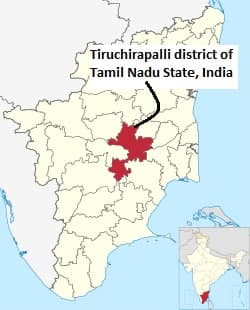
Programme/Projects
- The state authorities for urban affairs in the Tiruchirapalli district proposed involving NGOs to encourage people’s participation and empower women under the Namakku Name Thittam (We for Ourselves) programme.
- Gramalaya and two other NGOs formulated the project with funding from Water Aid.
- The project design called for the installation of drinking water facilities and individual toilets, as well as community mobilization with a focus on gender mainstreaming.
- The government provided the land sites, electricity, water supply, and loans to community members.
Outcomes
- Women’s empowerment;
- Income from “pay and use” toilets;
- Community development by women;
- Vermicomposting - sanitation and income;
- Creation of innovative child-friendly toilet (CFT) complex for children;
- Improved sanitation facilities; and
- Changes in key hygiene behaviour.
Key Factors for Success
- The project’s focus on women’s empowerment, including the formation of women’s self-help groups and the related savings and credit scheme run by the women;
- Open discussions with male community members regarding the benefits to themselves, their families and the community of women’s empowerment;
- Capacity-building of the women’s groups in the areas of accounting, and accessing government services;
- Development of communal sanitation facilities managed by the community;
- Collaboration between the government, NGOs and the community.
Looking Ahead - Sustainability and Transferability
- Success of gender mainstreaming in development programmes: The development of water and sanitation facilities using a model based on women’s empowerment will bring success to a country where the majority of the population currently still defecates in the open.
- Respect for women spreads from the community to the government to the world: In Tiruchirapalli, not only is the community benefiting from improved water and sanitation facilities, improved health and increased resources to support community development initiatives, but the women have also gained enormous self-confidence.
Places in news - Chushul Valley
|
Chushul Valley
|
|
Kumbalangi Village
|
|
Mahakali River
|
|
Similipal National Park
|
|
Dhubri
|
|
Tillari Conservation Reserve
|
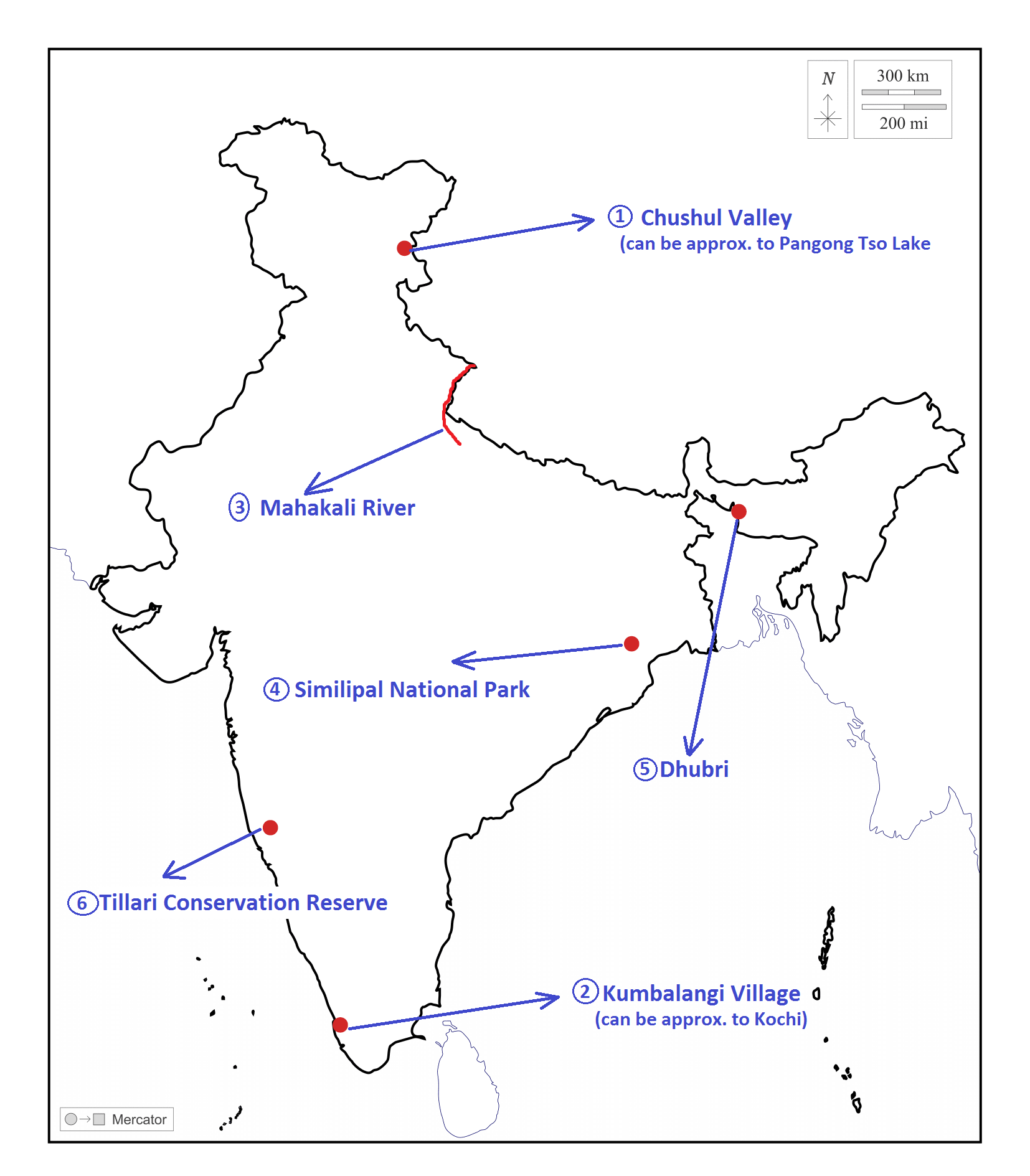
Share the article
Get Latest Updates on Offers, Event dates, and free Mentorship sessions.

Get in touch with our Expert Academic Counsellors 👋
FAQs
Geography Current Affairs focuses on the contemporary issues, events, and developments in the field of geography. It covers recent geographical phenomena, environmental changes, geopolitical shifts, and related news. This differs from regular geography studies which may focus more on foundational concepts, historical contexts, and theoretical frameworks.
Updates are provided regularly to ensure that subscribers stay informed about the latest developments in geography. Typically, updates are provided on a fortnightly basis, depending on the frequency of significant events and changes in the field.
Absolutely. Geography Current Affairs serves as a valuable resource not only for Geography optional but also for GS papers, especially GS Paper 1 (covering Indian Heritage and Culture, History, and Geography of the World and Society) and GS Paper 3 (covering Technology, Economic Development, Biodiversity, Environment, Security, and Disaster Management). It aids in building a holistic understanding of various topics and strengthens answer-writing skills by incorporating contemporary examples and perspectives.
Geography Current Affairs holds immense importance for UPSC preparation, particularly for aspirants opting for Geography optional. It helps candidates stay updated with the latest developments, geographical phenomena, environmental issues, and geopolitical shifts worldwide, aligning them with the dynamic nature of the subject as tested in the UPSC examinations.

